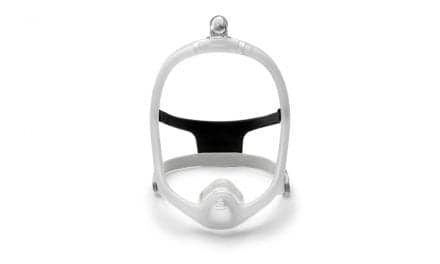Mount Sinai researchers have developed a novel, automated measure of analyzing sleep studies to determine the severity and risk of mortality in patients with obstructive sleep apnea (OSA).
The findings are published in the American Journal of Respiratory and Critical Care Medicine.
The Mount Sinai Sleep and Circadian Analysis Group developed an automated breath-by-breath measure called ventilatory burden that assesses the proportion of small breaths during a routine sleep study. This novel measure is not dependent on the consequences of hypoxemia and the awakenings seen in OSA patients.
The researchers define the normal range for ventilatory burden, assess its variability night to night, and show its relationship to obstruction in the upper airway. They also predict short- and long-term consequences based on a routine sleep study—including potentially deadly conditions such as coronary heart disease.
“The current clinical way of determining the severity of one’s sleep apnea is based on crude methods that do not predict risk of cardiovascular diseases or even mortality,” says corresponding author Ankit Parekh, PhD, assistant professor of medicine (pulmonary, critical care, and sleep medicine) at the Icahn School of Medicine at Mount Sinai, in a release. “We have developed a way to analyze routine sleep studies to predict risk of cardiovascular diseases and even mortality. Clinicians who rely on arbitrary rules and thresholds for assessing severity of sleep apnea will now have a better-validated tool to better manage sleep apnea, and patients can receive the best care earlier.”
The apnea-hypopnea index (AHI) tells the average number of times per hour that breathing either partially or fully stops during sleep. However, this widely used standard only captures the rate of respiratory events and does not predict potential subsequent risks. Furthermore, calculation of AHI is influenced by various variables including scoring rules and other highly subjective baselines for breathing and oxygen saturation, rather than airway obstruction alone. AHI is also highly variable from one night to another. Thus, AHI is limited in describing the short- and long-term consequences of ongoing respiratory events overnight.
The researchers used data from two community cohorts evaluating disease conditions and patterns, as well as two retrospective sleep clinic cohorts, to derive the normative range of ventilatory burden from analysis of more than 34 million breaths from over 5,000 participants.
The team then assessed the relationship between the degree of upper-airway obstruction and ventilatory burden, and the relationship between ventilatory burden and mortality risks, including cardiovascular disease, that were derived using an automated algorithm. They also assessed the relationship between ventilatory burden and hypertension and sleepiness.
They found that the automated measure of ventilatory burden was able to effectively assess the severity of OSA, remain stable from one night to another, and predict mortality associated with cardiovascular diseases in patients, making it a viable alternative to AHI. The researchers say in a release that this study is the first time an alternative to AHI has been developed and investigated systematically, from establishing normal and abnormal cutoffs to assessing variability from one night to another and predicting risk of mortality.
The Mount Sinai team will next study an artificial intelligence algorithm built on top of the ventilatory burden to replace AHI and identify which patients will benefit from continuous positive airway pressure treatment, the first-line therapy in sleep apnea, preferably with a more racially and ethnically diverse patient dataset.
Photo 78932360 © Tommaso79 | Dreamstime.com










